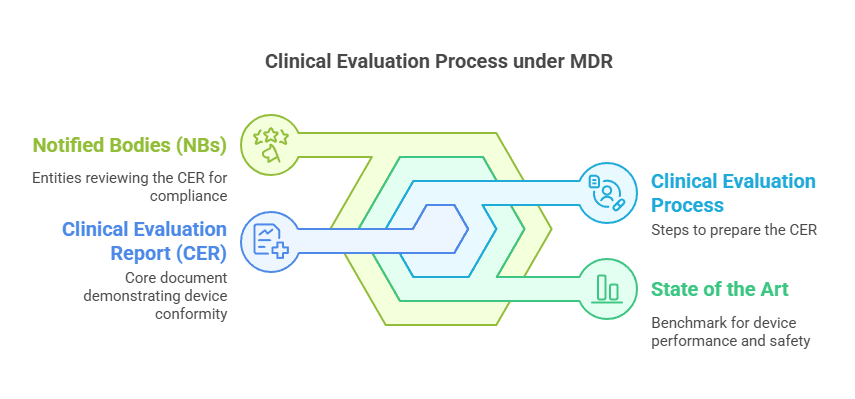Why Clinical Claims for Your Medical Devices Can Make or Break You
As a manufacturer, you need to understand how these claims directly impact your regulatory approval process and market credibility. Let’s explore why you should develop precise, evidence-backed clinical claims and how you can optimize them effectively.
What Are Clinical Claims for Medical Devices?
When you create clinical claims, you’re making explicit statements about your device’s performance, safety, and benefits. These claims form the foundation of your clinical evaluation reports (CERs), regulatory submissions, and marketing materials. For example:
“Our dressing reduces wound healing time by 50%.”
“Your surgical precision improves by 20% with our navigation system.”
You must substantiate each claim with robust clinical evidence to meet regulatory standards and build trust with healthcare professionals who use your devices.
Types of Clinical Claims You Need to Master
You’ll typically develop three categories of clinical claims for your medical devices:
Performance Claims: How your device functions in real-world settings
Safety Claims: How your device minimizes risks to patients and users
Clinical Benefit Claims: How your device positively impacts patient outcomes

For each type, you need specific supporting evidence from clinical studies, post-market surveillance data, or comparative analyses against state-of-the-art (SOTA) products.
Why You Can’t Afford Inaccurate Clinical Claims
Have you considered the consequences of overpromising? Imagine claiming your device reduces hospital stays by 30%, but your clinical data later reveals only a 10% reduction. This discrepancy can delay your CE marking approval and damage your credibility with regulators and customers. Align your clinical claims with robust evidence to avoid costly delays and maintain market trust.
How to Create Strong Clinical Claims for Your Medical Devices
Follow these best practices to build solid clinical claims that resonate with regulators and users:
Be Specific
Define measurable outcomes rather than making vague statements. When you specify exactly what your device achieves, you enhance credibility and meet regulatory expectations.
Back It Up
Always substantiate your claims with strong evidence from:
Your clinical studies
Peer-reviewed literature
Your post-market surveillance data
Comparative analyses against SOTA devices
Compare to SOTA
Show how your device compares favorably to existing solutions. Regulators appreciate when you provide clear benchmarks that demonstrate improvements or equivalence.
Maintain Consistency Across Documents
Ensure you create consistent messaging across all documentation—your CERs, technical files, marketing materials, and labeling—to maintain credibility and regulatory compliance.
Common Challenges You’ll Face When Defining Clinical Claims
You’ll likely encounter these hurdles:
Defining realistic clinical claims early in your product development
Gathering sufficient evidence to support your ambitious claims
Maintaining consistency as your documentation evolves
Real-World Impact of Strong Clinical Claims
When you develop accurate, well-supported clinical claims, you:
Accelerate your regulatory approval process
Build stronger trust with healthcare professionals
Reduce your risk of post-market issues
Position your device more effectively against competitors
Take Action on Your Clinical Claims Today
Start by reviewing your current clinical claims. Are they specific? Can you support them with robust evidence? Do they align across all your documentation?
If you’re developing a new device, begin with modest claims you can confidently support, then expand them as you gather more evidence. Remember, it’s always better to underpromise and overdeliver than to face regulatory delays and credibility issues.
Have you faced challenges in defining or justifying clinical claims for your medical devices? Share your experience in the comments below!
Want to learn more about optimizing your clinical evaluation process? Contact me for personalized guidance on developing effective clinical claims that support your regulatory success.





